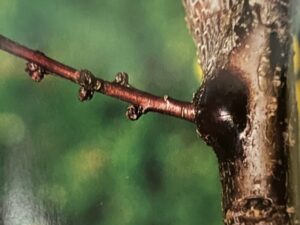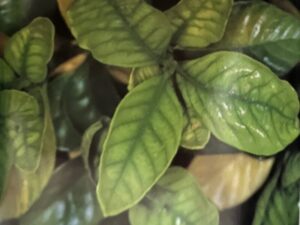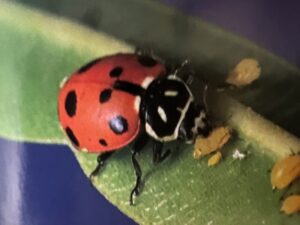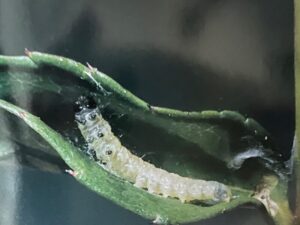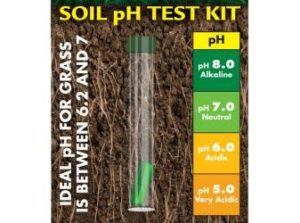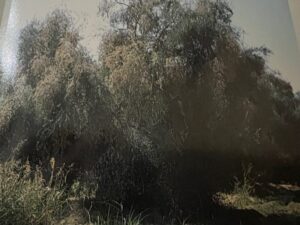Find solutions to your gardening problems.
Identify pictures of the pests that invade your garden, the damage they cause, and the treatment needed. You will also find pictures of plant disease and fungus with the recommended treatment, as well as, pictures of the various desert weeds and how to treat them.
Showing all 48 results
-

Animal Damage
Repellants that contain the urine of that particular animal’s predator, gopher traps placed in their major tunnels or constructed raised beds that are completely lined with wire are all remedies for animals that are damaging your plants. For rabbits, install cages over low growing beds. For birds, to protect fruit … Read More
-

Black Spot
This rose disease is caused by a fungus on rose canes and fallen leaves that thrives in warm, moist environments. Spores spread to other plant parts via splashing rain or overhead watering. It appears on young leaves as black circles with irregular margins. It grows to about 1″ wide and … Read More
-

Brown Patch
Brown areas or rings occur in warm weather in over fertilzed lawns with thick thatch layers. Treat with Fungaway.
-

Bud Drop
Causes of bud drop can be late frosts, soil that is too rich or poorly drained, over watering, under watering, and low humidity. Bud drop can be avoided by protecting your plant from these conditions.
-

Cankers
Cankers are dark, sunken spots formed on stems and crowns, caused by fungi in the soil. As the cankers enlarge, the stems collapse and the foliage wilts and dies. To reduce the threat of fungal disease, keep plants on the dry side, avoid overcrowding, and plant in beds where there … Read More
-

Chlorosis
Chlorosis is the yellowing of new leaves due to an iron deficiency. Treat with Chelated Iron.
-

Companion Planting
Companion planting is a concept that calls for planting two kinds of plants in a bed to discourage insects from attacking one of the two. The most common example is planting marigolds in the vegetable garden. Certain soil loving nematodes attack the roots of vegetables; marigold roots secrete a substance … Read More
-

Crickets
Crickets are nocturnal insects, smaller than grasshoppers, which develop underground for 2-4 years. Male crickets chirp in a high pitch tone. Crickets lay eggs in the soil and in plant stems, causing serious damage to plants. Use a granular treatment of `Kill A Bug` if treating in a garden or … Read More
-

Cupgrass
Also called wiregrass, cupgrass is native to southern Arizona. It has hairless stems, the leaf blades are flat and smooth, 1/2″ wide and 2-5 inches long. When mature Southwest cupgrass is 1-4 feet tall, bright green stems have two to five joints where rooting sometimes occurs. The flowering portion has … Read More
-

Earwigs
Earwigs are reddish-brown insects that are 3/4″ long. They are easily recognized by the pointy pincers on the tail end of their abdomens. Although they have wings, they rearely fly, preferring to quickly crawl. They are active from spring through fall. Earwigs eat decomposing and decaying wood. They are not … Read More
-

Fertilizer Basics
Lacking nutrients that plants need to thrive, not only causes them to falter, but also makes them more susceptible to pests and diseases. The three nutrients most vital to plants are nitrogen (N), phosphorus (P), and potassium (K). Because many parts of the west are deficient in both decomposing plant … Read More
-

Fertilizer Labels
Nitrogen (N) is listed first, followed by phosphorus (P) and potassium (K). The numbers listed stand for the percentage of each element. A formula of 20-6-12 means the product contains 20% nitrogen, 6% phosphorus, and 12% potassium. Any fertilzer that contains some percentage of each of these three nutrients is … Read More
-

Grass Mite Damage
Grass mites thrive in warm, humid weather and over fertilized lawns with thick thatch layers. They suck sap from blades, stems and crowns causing grass to grow in tight rosettes. Grass turns yellow and brown, then dies. Test for mites by shaking grass clumps over dark paper; the light specks … Read More
-

Grasshoppers
These 1/2″ long winged insects with enlarged hind legs can be brown, green or yellow. Although they chew grass, they are usually not a problem, but in large numbers can strip plants right to the ground. They can be controlled with insecticide.
-

Ground Beetles
These insects are shiny black. They can fly, but prefer to crawl. Beetles live in burrows in the soil, emerging to hunt and feed at night on other insects, caterpillars, soil maggots and grubs. Some larger species eat snails and slugs. They do not damage plants. No prevention is needed.
-

Japanese Beetles
Sporadic sightings have occured in western states. The body is 1/2″ long, has a distinctive metallic green sheen, and wing covers are copper colored. Larvae that live in the soil are white, C-shaped grubs. Adults feed on flowers and foliage during the day. They can fly as far as 5 … Read More
-

Lacewings
Lacewings are 1/2 inch in length, a delicate green color, and have transparent wings. They feed on plant nectar and pollen. Lacewings consume many garden pests such as aphids, mealybugs, scale, leafhopper nymphs, whiteflies, small caterpillars and spider mites, making them a beneficial garden insect. The larva looks somethng like … Read More
-

Lady Bugs
Lady bugs are colorfully spotted, 1/4″ long, red with black spots. They feed on aphids, mites and other soft-bodied insects. They cause no plant damage, making them beneficial insects commercially sold in nurseries.
-

Leaf and Stem Blight
The disease moves through low foliage as spores are spread by wind and water. It worsens when the groundcover holds in moisture during warm, wet weather. Leaves turn yellow, tan or gray, then brown as they shrivel and die. Remove infected material and increase air circulation.
-

Leaf Roller Damage
Leaf roller larvae will roll themselves up inside leaves, spinning a web to join leaves together. Other pests and fungal rots later enter the holes that leaf rollers chew. Treat with Thuricide.
-

Leaf Rollers
Leaf rollers are caterpillars that feed on leaves, shoots, and fruit. Larvae roll themselves up inside leaves, sometimes spinning a web to join fruit and leaves together. Other pests and fungal rots later enter the holes that leaf rollers chew in fruit. Treatment: Thuricide
-

Leafcutter Bee Damage
The bees that cause precise circles or ovals in foliage are small and hairy, either black, green, purple or blue. They seem to prefer foliage of roses, although any tree or shrub that has a shiny, firm leaf may be cut. Bees are docile and rarely sting humans and can … Read More
-

Nut Grass
Nut grass has solid stems that are triangular in cross section. The leaves grow from the base in groups of three. It will thrive in water logged soil. There are two types, yellow and purple, identified by the flowering stem. Nut grass spreads rapidly. Remove when they are young by … Read More
-

Oak Moths
Oak moths cause visible damage to oak trees through the west. They are tan or gray with a 1″ wingspan and noticeable veining on their wings. They are attracted only to oak trees, chewing leaves, making holes, and eventually defoliating branches. Infestations cannot be prevented. Kill larger caterpillars by spraying … Read More
-

Parsley Worms
This 2″ long, brightly colored caterpillar with a pair of orange horns, morphs into a large black and yellow swallowtail butterfly. It gets its name, because it is usually found on garden parsley. It feeds on carrots and related plants such as anise, celery, cilantro, dill, fennel, and queen anne’s … Read More
-

Potato Beetles
Colorado potato beetles are bright yellow with 5 bold brown stripes along the length of its body. Found in southwestern states, they are a pest of potato crops as well as tomatoes, eggplant, and peppers. They become active in May and will lay eggs as soon as a host plant … Read More
-

Powdery Mildew
This fungal disease can be seen by its white, powdery material that forms on leaves and stems. It is found in dry, humid conditions and in the absence of rain. Trees are left with stunted leaves that detract. It is a problem seen in Crape Myrtles.
-

Prickly Lettuce
Especially found in areas with dry soil, its leaves exude a milky juice when broken or pulled from the crown. It grows 1 – 5 feet tall from a deep taproot. The lower part of the stem is prickly or bristly, but it is nearly smooth toward the top. Pull … Read More
-

Psyllids
Psyllids are small winged insects called jumping plant lice. They are greenish or brownish and no more than 1/10″ long. They have antennae and clear wings that fold into a triangular shape and jump up when disturbed. They target acacia, boxwood, eucalyptus, laurel, magnolia, and pear trees. They will suck … Read More
-

Puncture Vine
They have sharp, thorny burs that poke into tires, paws, and bare feet. Puncture vines are weeds found in lawns, gardens and along roadsides over much of the West. They germinate in the spring and grow rapidly forming a dense low mat 5 – 15″ in diameter. They have yellow … Read More
-

Pythium Blight
This common grass disease wilts turf in irregular, small, usually shaded patches that gradually increase in size to form large areas. Infected blades turn dark from watery secretions and mat together in greasy-looking spots caused by hot, humid weather, poor drainage, and over fertilization. Treat with Fungaway.
-

Root Rot
Root rot is associated with heavy, soggy soil and crowded plants with poor air circulation. It causes wilting, yellowing, and leaf drop. Remove old leaves in late fall, divide plantings every few years to improve air movement, make divisions in the fall and replant in amended, well drained soil. Root … Read More
-

Rust
Orange colored rust pustules accumulate on the undersides of leaves, causing the upper surfaces to appear spotted. Leaves may drop if the fungal infection is severe. Snapdragons are prone to rust. Removing leaves will destroy the fungal spores. Treat with Dusting Sulphur or a Neem Oil product.
-

Rye Grass
Rye grass is a clumping grass used to seed lawns in the southwest during warm season grass dormancy. `Over The Top` will kill it in unwanted areas without killing other vegetation.
-

Scab Disease
This is a fruit tree disease. Treat with sulphur at the first hint of infection and to keep mildew outbreaks from taking over plants.
-

Slugs
Slugs thrive in moist, shady sites. They often hide under foliage rosettes for protection from drying sunlight. Silvery trails along the ground and on leaves are signs of their presence. They can decimate plants in a short time. Hand pick them to protect plants from looking ragged. Snail bait can … Read More
-

Snails
Snails have shells, they travel by extending the length of their bodies along a patch of slippery, silvery slime. They eat any and all garden plants leaving large ragged holes in leaves. They feed at night or on overcast or rainy days, hiding under cover when the sun shines. Eliminate … Read More
-

Squash Bugs
These bugs are diamond shaped, dark brown or black, 1/2″ in size. They hide on the underside of leaves. When they are caught and crushed they emit a foul odor. Squash bugs feed on cucumber, melon, pumpkin and squash. They suck plant juices from the leaves which will show spots … Read More
-

Sun Scald or Sunburn
Burns appear as brown areas surrounded by yellow, in the center of the leaves. As leaf tissue dies, the centers fall out. Sun scald is due to overexposure to sun occuring when young trees are moved from a protected situation such as a shaded nursery to an open garden site. … Read More
-

Thrip Damage
Thrips scrape openings in plant tissue to feed on plant juices and lay their eggs inside. These minute cuts cause silvery flecks on foliage and silver or brown blemishes on flowers and buds. They chew and suck plants vigorously scraping away the chlorophyl on leaves where they feed. Thrips look … Read More
-

Tree Pruning
Trees can be damaged if improperly pruned. Not only do such cuts make it easier for pests and diseases to enter, but they can also compromise the structural integrity of the tree. Removing and replacing a damaged tree is costly and its loss also changes the environment of the surrounding … Read More
-

Verticillium Wilt
Wilt starts with yellowing of leaf margins, then of entire leaves. Wilting and browning follow, occuring when stressed from shortage of water. There is no cure, but knowing the prevention may save your plant. Make sure your plants are adequately watered, especially during high temperature months in Phoenix.






